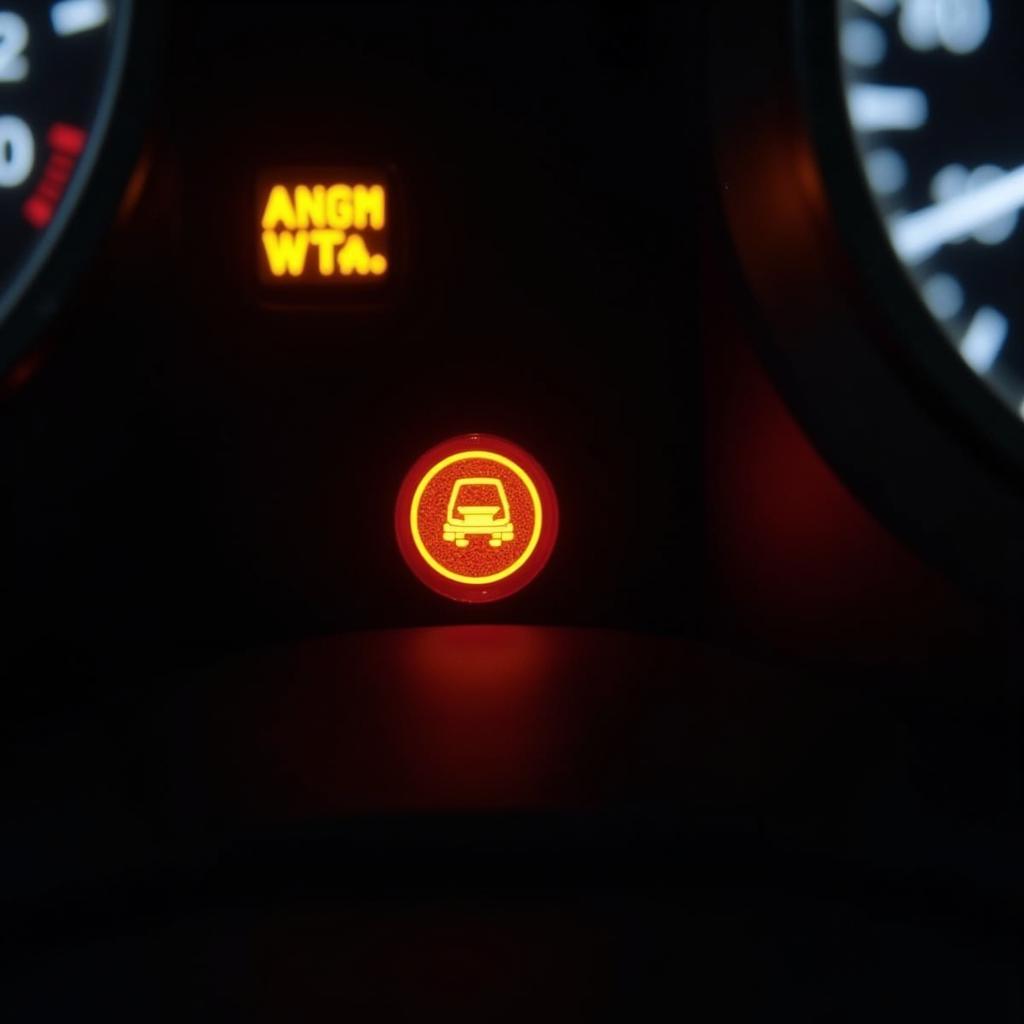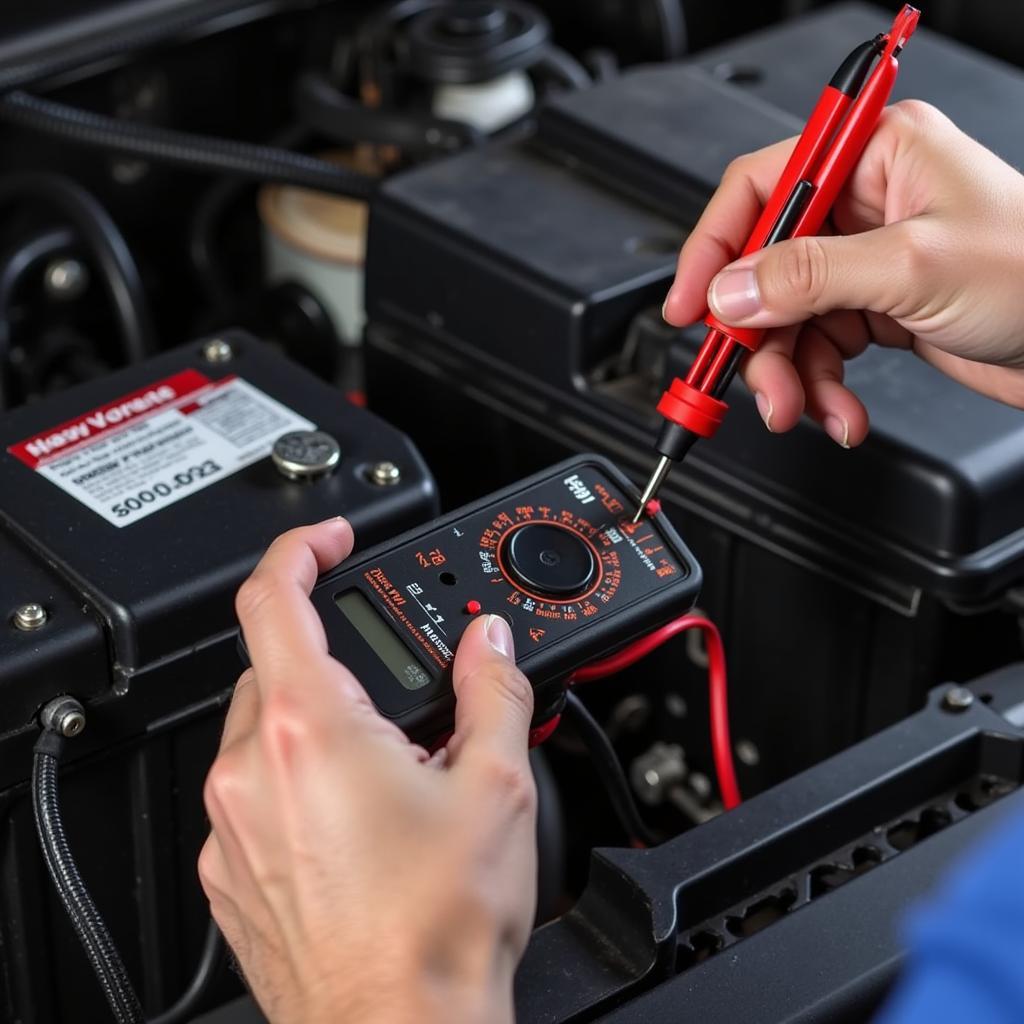The dreaded engine warning light on your Seat Arosa can be a source of anxiety. This guide will delve into the common causes, diagnostic procedures, and solutions for dealing with the Seat Arosa engine warning light, offering you practical advice and expert insights. We’ll cover everything from simple checks you can perform yourself to more advanced diagnostic techniques.
After this opening, you’ll find a wealth of information about the Seat Arosa engine warning light, including DIY solutions and when professional help is needed. Learn more about other Seat Arosa warning lights at seat arosa warning lights.
Understanding the Seat Arosa Engine Warning Light
The engine warning light, often amber or yellow, illuminates when your car’s onboard diagnostic system (OBD-II) detects a problem. This light doesn’t pinpoint the exact issue, but serves as a general alert. Ignoring it can lead to further damage and costly repairs.
Common Causes of the Engine Warning Light
The engine warning light can be triggered by a wide range of issues, from minor sensor malfunctions to more serious mechanical problems. Some common culprits include:
- Faulty Oxygen Sensor: This sensor monitors the exhaust gases and helps regulate the air-fuel mixture. A faulty sensor can cause reduced fuel efficiency and increased emissions.
- Loose or Damaged Gas Cap: A loose or damaged gas cap can leak fuel vapors, triggering the warning light.
- Malfunctioning Catalytic Converter: The catalytic converter reduces harmful emissions. A malfunction can lead to decreased engine performance and increased pollution.
- Spark Plug or Ignition Coil Problems: These components are essential for engine combustion. Faulty spark plugs or ignition coils can cause misfires and rough idling.
- Mass Airflow Sensor (MAF) Issues: The MAF sensor measures the air entering the engine. A faulty MAF sensor can disrupt the air-fuel mixture, leading to poor performance.
“A seemingly simple issue like a loose gas cap can often trigger the engine warning light,” says automotive diagnostic expert, Robert Johnson. “Always start with the easiest checks before assuming the worst.”
 Seat Arosa Engine Warning Light on Dashboard
Seat Arosa Engine Warning Light on Dashboard
Diagnosing the Problem
While some basic checks can be done at home, proper diagnosis often requires specialized equipment.
DIY Checks
- Check the Gas Cap: Ensure the gas cap is tightly secured.
- Visually Inspect the Engine Bay: Look for any loose wires, disconnected hoses, or obvious signs of damage.
Professional Diagnostics
For more complex issues, professional diagnostics using an OBD-II scanner are essential. This scanner reads the diagnostic trouble codes (DTCs) stored in the car’s computer, pinpointing the specific problem. For more information on specific warning lights, check our guide on the seat arosa epc warning light.
Solutions and Repairs
The solution depends on the specific problem diagnosed. Sometimes, a simple fix like tightening the gas cap is all that’s needed. Other times, more extensive repairs may be necessary.
Remote Software Solutions
In some cases, the issue can be resolved remotely through software updates or reprogramming. This innovative approach can save time and money compared to traditional repairs. Learn more about the epc warning light seat.
Mechanical Repairs
For mechanical issues, professional repair is often necessary. This could involve replacing faulty sensors, spark plugs, or other components. Regular maintenance can help prevent many of these problems. If you’re concerned about oil service warnings, check out our guide on the seat arosa oil service warning.
“Remote software solutions are becoming increasingly prevalent in automotive diagnostics,” explains automotive software engineer, Maria Sanchez. “They provide a quick and efficient way to address certain engine issues.”
 Mechanic Working on Seat Arosa Engine
Mechanic Working on Seat Arosa Engine
Conclusion
The Seat Arosa engine warning light shouldn’t be ignored. Understanding the potential causes and utilizing appropriate diagnostic methods are crucial for resolving the issue promptly and preventing further damage. While DIY checks can be helpful, professional diagnostics and repairs are often necessary for a complete and accurate solution. Don’t hesitate to seek expert assistance when dealing with the epc warning light seat arosa.
FAQ
- What should I do when the engine warning light comes on? Don’t panic. Pull over when safe, check the gas cap, and visually inspect the engine bay. If the light persists, seek professional diagnostics.
- Can I drive with the engine warning light on? While it might be possible to drive short distances, prolonged driving with the warning light on can exacerbate the problem and lead to further damage.
- How much does it cost to diagnose the engine warning light? Diagnostic costs vary depending on the complexity of the issue and the service provider.
- Is it always expensive to fix the problem causing the engine warning light? No, sometimes a simple fix like a new gas cap is all that’s needed. However, more complex issues can be costly.
- How can I prevent the engine warning light from coming on? Regular maintenance, including oil changes, spark plug replacements, and emissions system checks, can help prevent many of the issues that trigger the warning light.
- What is an OBD-II scanner? An OBD-II scanner is a diagnostic tool that reads trouble codes from the car’s computer, allowing mechanics to pinpoint the specific problem.
- Can I use a generic OBD-II scanner? Yes, generic scanners can read most codes. However, a Seat-specific scanner may provide more detailed information.

